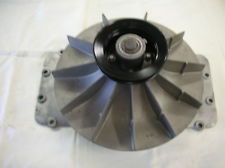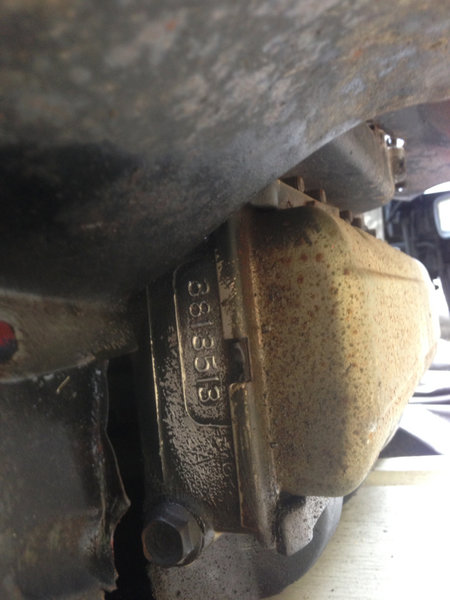


It may be billed as a 1964, but it looks like it has a 145 CI 1962-1963 engine attached instead of a 1964 164 CI engine. The steel cooling fan and riveted steel crankshaft pulley indicate an earlier engine. The missing air cleaner assembly and missing perimeter sheet metal are a problem. The perimeter sheet metal prevents exhausted engine heat from reentering the engine compartment and of course keeps dirt out. Excess heat is an enemy for a turbocharged engine.

- 1961-1963 Steel Corvair Blower (Fan)
- 1961-1963 Steel Corvair Blower (Fan).jpg (6.99 KiB) Viewed 1573 times

- 1964-1969 Magnesium Corvair Blower (Fan)
- 1964-1969 Magnesium Corvair Blower (Fan).jpg (6.05 KiB) Viewed 1573 times

- Corvair Blower Fan Designs
The engine serial number will not help to identify the model year or engine displacement. The serial number only tells you the month and day of manufacture. The two-letter suffix code sometimes provides a year of manufacture clue, but in the case of the 1962-1964 turbocharged engines all had the same "YR" suffix code. 1962-1963 150 hp turbocharged engines had a 145 cubic inch displacement. The 1964 engine was still rated at 150 hp because the turbocharger capacity had not increased, but the engine crankshaft stroke had increased — bumping the displacement up to 164 cubic inches. In 1964 the cooling fan was changed to a lighter magnesium cast unit, and a harmonic balancer replaced the riveted crankshaft pulley to compensate for engine crankshaft harmonics created by the long-stroke 164 CI crankshaft.
Cylinder head casting numbers did, however, change in 1964...
1962-1963 145 CI 150 hp Cylinder Head Casting No:
3817286, 3817287, 3886248, or 3886249 (8.00:1 Compression Ratio).
1964 164 CI 150 hp Cylinder Head Casting No:
3819904 (8.25:1 Compression Ratio),
or
3856636, 3856638, or 3886259 (8.00:1 Compression Ratio).
Sample Cylinder Head Casting Number Locations...












 1966 Corvair Corsa Convertible
1966 Corvair Corsa Convertible

It may be billed as a 1964, but it looks like it has a 145 CI 1962-1963 engine attached instead of a 1964 164 CI engine. The steel cooling fan and riveted steel crankshaft pulley indicate an earlier engine. The missing air cleaner assembly and missing perimeter sheet metal are a problem. The perimeter sheet metal prevents exhausted engine heat from reentering the engine compartment and of course keeps dirt out. Excess heat is an enemy for a turbocharged engine.